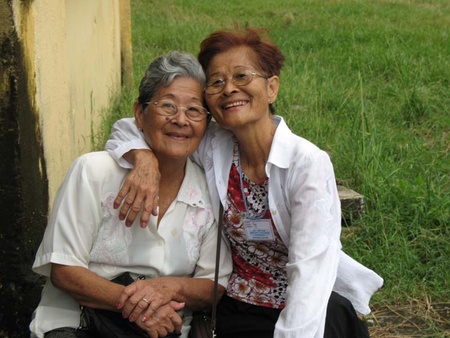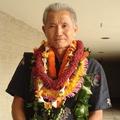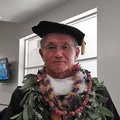Read part 1 >>
Thus, some Japanese viewed the first Okinawan immigrants as a nuisance. This view was especially strong in Hawai‘i, where emigrants from Japan had begun arriving 15 years earlier, in 1885. Japanese communities were already established on sugar plantations throughout Hawai‘i.
The immigration of a people who did not speak standard Japanese and who had different cultural practices must have been confusing for the Japanese communities. Many who emigrated from Okinawa, Japan’s most impoverished prefecture, did not have the opportunity to receive a proper Japanese education.
The look of scorn from their Japanese co-workers must have been tough and could have led to their sense of inferiority, for there was a time in Hawai‘i’s Japanese immigrant community that there was a distinction between the “Okinawans” and “Naichi,” or “Inlanders.”
When we interviewed Mr. Albert Teruya, a Nisei and co-founder of Times Supermarket, he told us, “Though it’s unimaginable now, when we were young it was unbearable to be from Okinawa. I guess that we felt inferior to be Okinawan, compared to the Inlanders.”
University of Hawai‘i Professor Mitsugu Sakihara, who passed away 11 years ago, commented on this inferiority that Okinawans felt. “The discrimination, prejudice, and inferiority that Okinawan Issei felt actually led to their aspiration. The Okinawan Issei tended to be education-driven because they felt that they did not want their children to go through the same hardships.”
Slowly, the Uchinanchu who moved into the cities began finding ways out of hardship. Especially popular were restaurants in Hawai‘i, trade and sewing in Brazil, flower shops and laundry businesses in Argentina, and hairdressing and bakeries in Peru. The immigrants had changed from drifters to established businesspeople. More Uchinanchu immigrants joined them and Okinawan communities began forming.
Especially in South America, Uchinanchu began settling in urban areas with friends, family, and local ties, evolving into unique Okinawan communities. Even after the war, Okinawa sent many immigrants to South America. The prewar communities were a great help to these newcomers.
What were these Hawai‘i and South American Okinawan communities like? I believe there was a strong tie to Okinawa at the time of the Issei migration in the early 20th century. In Okinawa, people lived in close local and family communities where farming was done in a style of group work called yuimāru.
Yuimāru is a system in which all of the villagers help each other with the planting and harvesting of crops without being paid. Although the people were poor, they strengthened their community ties by helping each other in the spirit of yuimāru.
The Issei brought this village-community style of thinking to their new homes overseas and were able to create an emotional “home” for the Uchinanchu. In interviewing many Issei, I realized that there were a few key words they all used.
The first was chuidashiki-dashiki. In English, it means to help one another, or mutual aid. The Issei welcomed the newcomers, told them “chuidashiki-dashiki”, and helped them until they became independent.
Next was inu-shimanchu-demun, meaning, “because we are from the same province.” This, again, shows how the Uchinanchu cherished their local and family ties. Within the Hawaii United Okinawa Association, there are more than 50 Okinawan regional clubs. These, too, are connected through the inu-shimanchu, or provincial, spirit.
Then there is the expression, nankurunaisa, which means, “somehow, we will manage.” It also, however, encompasses looking at things positively and optimistically. The Issei encountered many hardships, including language barriers and harsh labor conditions, but they chanted, “Nankurunaisa…” and moved forward without being disappointed.
There was also the system known as moai. In Okinawan language, it is muei, or yurei. Basically, it was a pooled money system in which members determine an amount that members of the moai will pay. Members of the moai then take turns receiving that money for their use.
The moai system was especially popular with the overseas Uchinanchu. Many immigrants who started laundry businesses in Argentina used the moai system to get the capital they needed to start their business. Shinkou Matayoshi, who worked in the laundry service in Buenos Aires, said, “In the Argentinian community, the immigrants had no trust and the banks would not lend us any money. The moai system that we Uchinanchu used helped us to make the start-up capital.”
The combination of mutual aid, strong regional bonds, and optimistic thinking of these “Yuimāru communities” strengthened and united the Uchinanchu immigrant communities and aided in their emotional stability.
The Issei continued to practice their traditional Okinawan culture, bringing their sanshin to Hawai‘i and other overseas destinations to which they immigrated. They played the sanshin to ease their fatigue after a long day of work, and they danced and sang to their sanshin at weddings of fellow Uchinanchu and to celebrate the birth of new children.
Benita Iha, a Nisei in Cuba, told us that she could not forget her father, Kamaichi, playing his sanshin, as he recalled his home in Okinawa. This was after the Cuban revolution, so it was impossible for them to return to Okinawa. Iha-san compiled that memory—and those of other Okinawan immigrants—into a book titled Sanshin.

The former vice president of Ritsumeikan University, Kiyozo Sasaki, wrote, “The Okinawans play the sanshin and sing traditional songs and dances at New Year’s parties and prefectural party picnics to reminisce about their hometown. As that spirit transcends time, through the generations of immigrant communities, the strength of the Okinawan people is shown.”
*This article was originally published in the Hawaii Herald on August 17, 2012. Republished on Discover Nikkei with permission.
© 2012 Hawaii Herald; Shinichi Maehara





